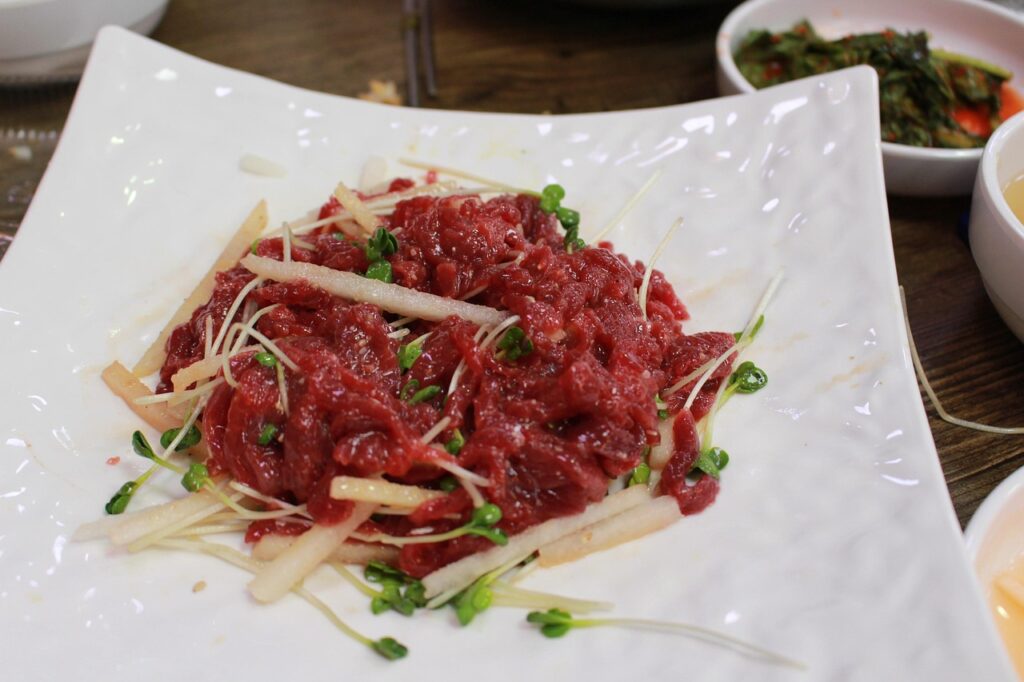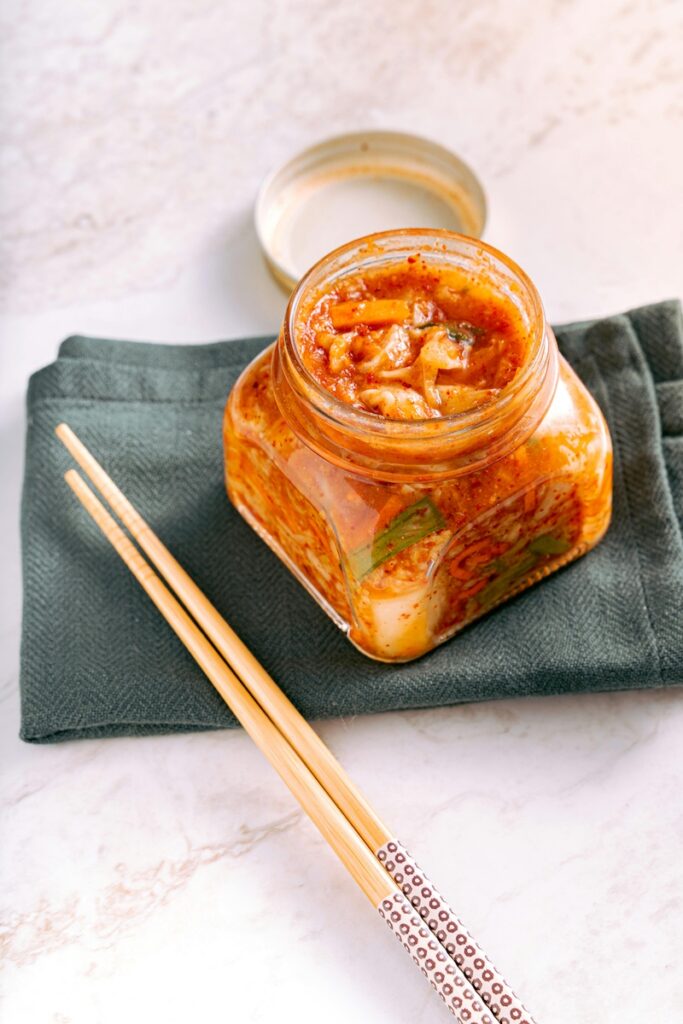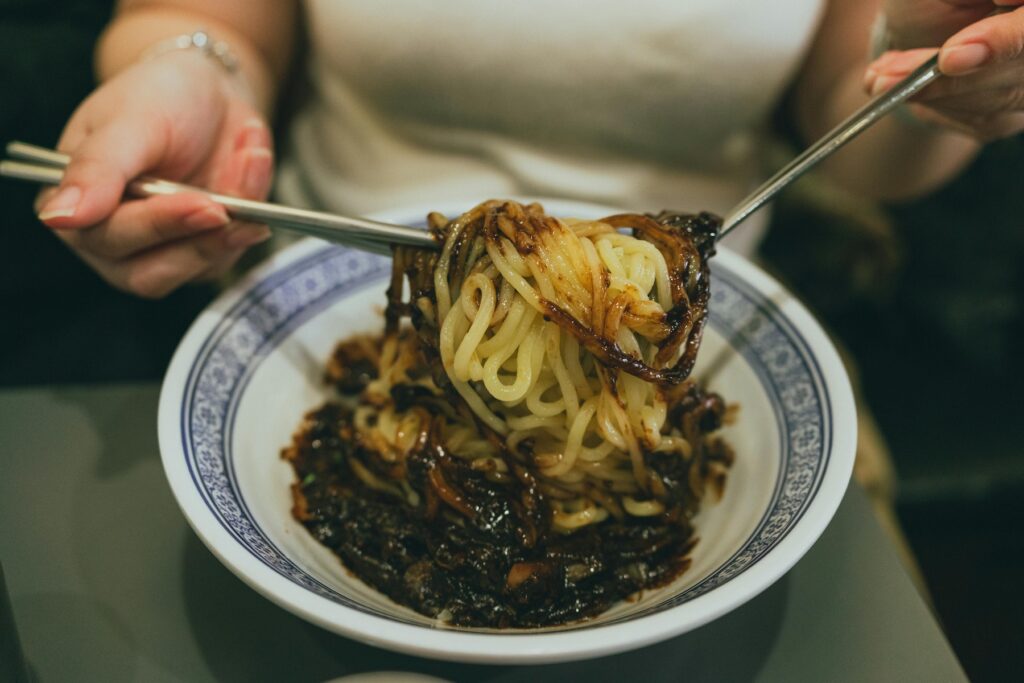Introduction: When a Steak Isn’t Just a Steak
Ask anyone who’s been to Korea, and they’ll tell you:
there’s something unforgettable about eating beef here.
It’s not just the tenderness of the meat,
nor the way it sizzles on the grill —
it’s the experience.
Foreign visitors often arrive expecting a typical steak dinner.
Then they find themselves sitting around a glowing grill,
surrounded by side dishes, dipping sauces, and the warm hum of conversation.
Someone in an apron flips the slices of beef perfectly,
the air fills with a smoky sweetness,
and a stainless vent above the table quietly sucks the air clean —
an elegant dance between fire and order.
This is not just eating.
This is Hanwoo, and it’s the taste of Korea’s respect for food, people, and place.

What Is Hanwoo? Korea’s Native Beef
Hanwoo (한우) literally means “Korean cow.”
It’s a native breed raised only in South Korea —
a national pride that dates back thousands of years.
Unlike imported beef, Hanwoo cattle are raised with strict feeding standards,
often fed a grain-rich diet and allowed more space to move.
Farmers treat them almost like family; some even play music in the barns.
The result?
A beef that’s marbled with delicate fat,
tender yet clean,
rich without being greasy.
Its aroma is subtler than Wagyu,
its flavor deeper than Angus —
a kind of balance that feels unmistakably Korean.
The Grading System: Understanding “1++”
Korean beef is graded by the Korean Meat Grading Service,
a detailed evaluation based on marbling, texture, color, and fat quality.
| Grade | Description | Nickname |
|---|---|---|
| 1++ | Highest quality, extremely fine marbling | “Royal Hanwoo” |
| 1+ | Excellent quality, balanced marbling | Premium dining |
| 1 | Very good, tender and juicy | Everyday luxury |
| 2 | Leaner, affordable | For daily meals |
| 3 | Standard, mostly for stews | Entry-level |
To most Koreans, ordering 1++ Hanwoo means celebrating —
a birthday, a promotion, a family reunion.
It’s not just food; it’s a moment.
For travelers, understanding this grading system
is the key to appreciating why Hanwoo is often called the pride of Korean tables.

How Koreans Grill Beef: A Culture of Precision
Korean beef dining isn’t about big steaks; it’s about shared bites.
Instead of slabs of meat, thin slices are grilled quickly over charcoal or gas,
then cut into bite-sized pieces with scissors —
a sight that often amazes foreigners.
Someone at the table usually takes charge of the grill,
turning the slices with tongs,
cutting them at just the right moment.
In some restaurants, staff members do this for you —
a mix of hospitality and culinary performance.
Meanwhile, an overhead ventilation hood descends like a silver halo,
quietly pulling smoke upward.
It’s a signature of Korean dining:
no smoky clothes, no chaos — just quiet efficiency.
The sound of sizzling fat, the smell of sesame oil,
the laughter between turns of the meat —
this is the rhythm of a Korean dinner.

The Role of Side Dishes and Sauces
No Hanwoo meal is complete without banchan (반찬) —
the array of side dishes that fill the table.
Among them, the most beloved partners for beef are the sauces:
- Salt (소금) — plain and clean, for appreciating the meat itself.
- Wasabi (와사비) — a subtle heat borrowed from Japanese influence.
- Ssamjang (쌈장) — a mix of doenjang (soybean paste), gochujang (red chili paste), garlic, and sesame oil.
Many Koreans also make their own “secret mix” on the spot —
ssamjang blended with crushed garlic, sliced chili,
a few drops of sesame oil, and sometimes even a bit of sugar.
It’s salty, nutty, slightly spicy —
the kind of flavor that makes rice taste like luxury.
Then comes the ritual:
take a lettuce leaf, add a slice of beef, a dab of sauce,
maybe a bit of rice and garlic,
fold it into a perfect bite,
and eat it whole.
The table falls silent for a second —
because everyone is busy smiling.
The Art of the Ssam: A Bite of Balance
The “ssam” (쌈) — the wrap — is more than a way of eating.
It’s a symbol of harmony:
meat, vegetables, sauce, and rice coming together in one mouthful.
Foreigners often marvel at this —
the absence of knives and forks,
the casual intimacy of sharing food from the same grill,
the way one meal becomes a collective act.
In Korea, eating together isn’t just social —
it’s spiritual.
The act of wrapping food in greens reflects a deeper idea:
balance, unity, and respect for the ingredients.

Raw Beef Culture: Yukhoe and Yuk Sashimi
Before the grill heats up,
many Koreans begin their meal with yukhoe (육회) —
thinly sliced raw beef seasoned with sesame oil, soy sauce, pear, and egg yolk.
To foreigners, it’s often surprising:
“Raw beef? Really?”
But one bite changes everything.
It’s fresh, tender, and slightly sweet.
The pear adds crispness,
the sesame oil adds aroma,
and the egg yolk ties it all together like silk.
A more traditional version, yuk sashimi (육사시미),
uses even simpler seasoning —
just raw beef dipped in sesame oil and salt.
It’s not about masking flavor,
but celebrating the purity of the meat itself.
Both dishes embody the Korean belief that simplicity can reveal depth.
The Flow of a Korean Beef Meal
Unlike a Western dinner where courses come one after another,
a Korean meal unfolds like a symphony.
It might begin with raw appetizers (yukhoe),
followed by soju or beer — conversations warming up as glasses clink.
Then the grill comes alive,
and the table transforms into a stage.
People take turns grilling, flipping, wrapping, feeding each other.
There’s laughter, storytelling, and sometimes, quiet moments of appreciation.
At the end, a simple soup or cold noodles (naengmyeon) often arrives —
cleansing, cooling, closing the meal with grace.
Why Hanwoo Is Expensive — And Why It Feels Worth It
Hanwoo is considered a premium meat, often twice as expensive as imported beef.
But for Koreans, that cost carries meaning.
Hanwoo symbolizes care, occasion, and respect.
It’s what families eat when celebrating milestones.
It’s what couples order on anniversaries.
It’s what bosses treat employees to after a hard year.
Foreigners often comment:
“Korean beef is expensive, but the experience feels complete.”
That’s because you’re not just paying for food —
you’re paying for craftsmanship, service, and emotion.

Where to Experience Authentic Hanwoo in Seoul
If you’re visiting Seoul, here’s where you can truly taste the Hanwoo experience:
- 🥩 Majang Meat Market (마장축산시장) – Seoul’s largest meat market, where you can pick fresh cuts and have them grilled on-site.
- 🍶 Yeontabal (연타발) – A famous Hanwoo restaurant chain known for premium cuts and perfect service.
- 🏮 Mapo BBQ Alley (마포 고기골목) – Lively and local; try Hanwoo with soju among Seoulites.
- 🍚 Hanwoo Ggot (한우꽃) – Modern-style Korean dining emphasizing traditional sauces and presentation.
Drinks and the Art of Korean Dining
No Korean beef meal is complete without a drink.
Soju is the classic companion — crisp, clean, and deceptively strong.
Beer (maekju) is often mixed with soju to make “somaek,”
the unofficial drink of celebration.
In finer restaurants, wine pairings are becoming common —
especially reds that complement Hanwoo’s buttery texture.
But whatever you drink, it’s the conversation that makes it special.
In Korea, a meal isn’t finished until the table feels full — not with food,
but with warmth.
Foreigners’ First Impressions: Surprise and Delight
Foreign visitors often say Korean beef dining feels like theater.
Everything happens at once — sizzling grills, countless side dishes,
staff quietly swapping plates and replacing coals.
Some laugh when they see meat cut with scissors.
Others stare at the silver vents that hover like UFOs.
And everyone, without fail, ends up taking photos of the table.
But once they taste the beef — tender, smoky, perfectly seasoned —
they stop laughing and simply nod,
as if to say, “Now I get it.”
Conclusion: Hanwoo as a Reflection of Korea
Hanwoo isn’t just about flavor —
it’s about connection.
It connects generations,
combines technology and tradition,
and turns a simple meal into a shared ritual.
Every slice of beef, every dip in ssamjang,
every clink of a soju glass says something about who Koreans are:
grateful, attentive, communal.
So when someone asks why Korean beef tastes different,
the answer isn’t only in the marbling.
It’s in the moment —
the warmth of the people,
the sound of the grill,
and the feeling that you’re part of something deliciously human.

